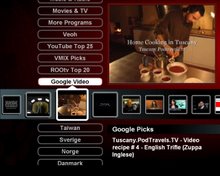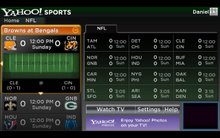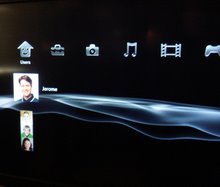There is a rapidly increasing number of articles on “what happened to the PC-in-living-room” ; Such as the “HTPC: Victim of Evolution”, linked below. The author includes such statements as: “HTPC party ended before it even began”.
The terminology HTPC stands for Home Theater PC. This was its early name. Maybe in an attempt to fix its marketing problems, it was later know as the DHT (Digital Home Theater), then more recently DHC (Digital Home Cinema).
The article suggests the new candidate for digital-convergence in the living room is the networked STB with DVR (digital video record). A STB has the same disc storage requirements as a PC when recording digitally broadcast video; but users don’t have to deal with the complexity and cost of getting a PC to digitally record. Using a PC to perform analog video record (PVR) typically results in noticeable loss of video quality. It can also require an IR-blaster to enable the PC to control the STB as if it is sending remote control commands.
The author actually states there is another candidate for living room usage, the Digital Media Adapter (DMA or Streamer). This is to provide a “bridge between the PC and the entertainment system”. But the DMA will find it difficult to compete with a networked STB with active-TV technology, as they achieve much more than a simple DMA. Active-TV technology enables a STB or DMA to deliver TV-web channels accessed via the internet.
The DMA advantage is summarized:
- [quote]These streamers [DMAs] present several benefits over a dedicated HTPC. Since it operates over a network (either Wireless G or Ethernet), owners no longer need to keep their PC in close proximity to the viewing area. Leaving the computer in another room, where it is out of earshot and out of sight, eliminates concerns over chassis noise and increases the all-important “Spousal Acceptance Factor.”[end]
This is a good description of the Extended-PC approach used by active-TV technology; Basically described as a TV or STB assisted by a networked PC. Unlike the author, I don’t agree that DRM will stand in the way of the networked-STB’s acceptance over the HT-PC. The STB already deals with CA (conditional access) security used by broadcasters. It can also deal with DRM (some already do).
Additionally, there are a growing number of TV-web channels. These channels give the networked STB access to interesting video programs. TV-web channels support a new style of video formatting; One which consumers are increasingly familiar with, given their use of PCs and laptops to access video sharing PC-web sites.
Different forms of DMA have been around for some time, but like the HT-PC, have never gained much market acceptance. The Apple-TV box may be the break-through DMA. However, a DMA with active-TV technology, or better still a STB/DVR or TV with active-TV technology, offers the user a lot more viewing choices.
Importantly, leveraging a users existing PC or laptop PC to build an active-TV home system, means a user most only bear the cost of the less expensive active-TV STB to gain access to TV-web channels. However, my own testing indicates that an Extended-PC system works better with the dual-core PC processors. By better, I mean the demands made by the TV users have little impact on the simultaneous PC user.
Feedback, corrections and comments welcome.
The referenced article “HTPCs: A Victim of Evolution?” is available at: http://consumer.hardocp.com/article.html?art=MTI4OCwxLCxoY29uc3VtZXI=









No comments:
Post a Comment